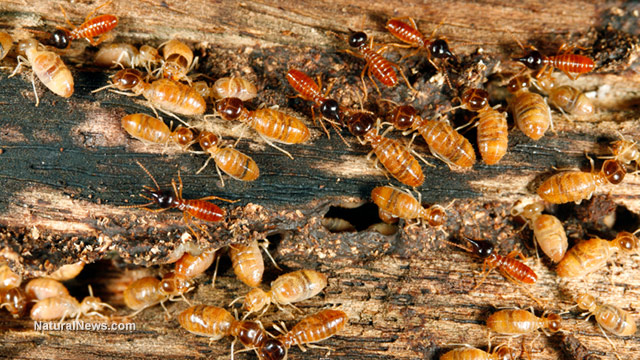| Online: | |
| Visits: | |
| Stories: |

| Story Views | |
| Now: | |
| Last Hour: | |
| Last 24 Hours: | |
| Total: | |
Insect Cuisine Coming Soon to a Store Near You – Can Bugs Feed the World?

“Stinkbugs have an apple flavor, and red agave worms are spicy. A bite of tree worm apparently brings pork rinds to mind,” reports National Geographic. “This information will come in handy for those of us following the latest recommendation from the United Nations: Consume more insects,” the magazine adds.
Before dismissing the idea of using bugs as a food source, consider that some two billion people worldwide eat insects regularly — and not just because they’re plentiful, easy, and economical. The critters are also high in vitamins and minerals, low in fat, and they pack-in serious protein. Best of all, insects emit far fewer greenhouse gases than feedlot livestock and take up less space, leaving a much smaller carbon footprint on the environment. Taking entomophagy — the ingestion of bugs for food — a step further, and proponents point out that the practice is also a safe and healthy way to reduce pest insects. An example of this was seen in Israel. During a locust invasion last autumn, citizens took an unconventional approach to managing the infestation — by eating the pests as an alternative to the use of poisonous insecticides.
The ultimate survival food
Instead of viewing insects as bothersome troublemakers, we can look upon bugs as a nutritious and flavorful addition to the diet — especially during times of food scarcity and insecurity. Wilderness survival experts have long-recognized the benefits of insects. And now, savvy entrepreneurs have developed a nourishing insect meal. The flour can be added to everything from protein bars to baked goods and tortillas, helping to bump-up protein content and nutrients like iron and zinc.
A case in point is “power flour” — a product created by MBA students from McGill University in Montreal, which assists in providing food security for impoverished countries. The flour couldn’t be more timely.
According to the BBC:
“By the year 2050, the planet will be packed with nine billion people. In low- and middle-income countries, the demand for animal products is rising sharply as economies grow; in the next few decades, we’ll need to figure out how to produce enough protein for billions more mouths. Simply ramping up our current system is not really a solution. The global livestock industry already takes an enormous toll on the environment. It’s a hungry and thirsty beast, gobbling up land and water. It’s a potent polluter, thanks to the animal waste and veterinary medicines that seep into soil and water. And it emits more greenhouse gases than planes, trains and automobiles combined.”
Be AWARE truthisscary.com
Source: http://truthisscary.com/2015/01/insect-cuisine-coming-soon-to-a-store-near-you-can-bugs-feed-the-world/



